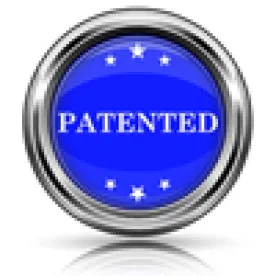Takeaway: Claims in a continuation-in-part application may benefit from an earlier-filed application even without in haec verba support for the challenged claim language.
In its Decision, the Board did not institute inter partes review of claims 1-20 of the ‘563 patent because the allegedly anticipating KenKnight ‘967 reference was not prior art. The ‘563 patent “relates to an implantable system for the antitachycardia pacing of the heart of a patient in need of such treatment.” As an initial matter, the Board found that “none of the terms in the challenged claims requires express construction at this time.”
The Board discussed the legal standard for priority dates:
A patent that arises from an application that is a continuation-in-part of a parent application may benefit from the filing date of the earlier application so long as the disclosure of the earlier application meets the requirements of 35 U.S.C. § 112, ¶ 1, including the written description requirement. Tech. Licensing Corp. v. Videotek, Inc., 545 F.3d 1316, 1326 (Fed. Cir. 2008). To meet the requirements thereof, the disclosure of the earlier application must convey with reasonable clarity to those skilled in the art that the inventor was in possession of the invention, as of the filing date sought. Vas-Cath Inc. v. Mahurkar, 935 F.2d 1555, 1563–64 (Fed. Cir. 1991). “[W]hile the description requirement does not demand any particular form of disclosure, or that the specification recite the claimed invention in haec verba, a description that merely renders the invention obvious does not satisfy the requirement.” Ariad Pharma., Inc. v. Eli Lilly and Co., 598 F.3d 1336, 1352 (Fed. Cir. 2010) (en banc) (internal citations omitted).
Petitioner argued “that the ‘563 patent added new subject matter directed to antitachycardia pacing and is not entitled to a filing date earlier than its September 7, 1999 filing date.” Patent Owner countered that “[a]s a whole, the ‘261 application discloses a device for the treatment of cardiac techyarrhythmias via multiple therapies, including defibrillation, auxiliary pulsing and pacing.”
The Board agreed with Patent Owner:
The claims at issue recite “a plurality of primary stimulation electrodes,” and do not differentiate among those electrodes as to the delivery of primary pulses or auxiliary pulses. Indeed, as explained above, the same electrodes (A, B, C, or D) may be used to deliver auxiliary or primary pulses depending on the instance. See Ex. 1002, Tables 1–4; Ex. 1001, Tables 1–4. In this connection, the ’261 Application describes “a plurality of primary stimulation electrodes” that are configured to deliver pulses having the same energy as antitachycardia pacing pulses, as recited by claims 1–20 of the ’563 patent.
Further, we agree with Patent Owner (Prelim. Resp. 14) that the ’261 Application also discloses the use of “pace/sense” electrode 54, which can be located proximal or distal to primary electrode 53 on lead 23. See Ex. 1002, 15:17–20, 27–29, Fig. 6. . . . Thus, the ’261 Application uses the term “pace” with respect to electrode E, indicating that the disclosed system was intended to provide “[p]acing and sensing capability” when the system is “configured to monitor electrical rhythm activity in both atrial and ventricular chambers.” Id. at 16:1–5.
The Board thus determined “that the ‘563 patent may benefit from the filing date of the ‘261 Application, and that KenKnight ‘967 is not prior art to the ‘563 patent.” Accordingly, the Petition was denied.
Boston Scientific Corp. v. UAB Research Foundation, IPR2015-00918
Paper 10: Decision Denying Institution of Inter Partes Review
Dated: September 24, 2015
Patent: 6,266,563 B1
Before: Phillip J. Kauffman, Benjamin D. M. Wood, and James A. Worth
Written by: Worth
Related proceedings: The Board of Trustees of the University of Alabama at Birmingham v. Boston Scientific Corp., C.A. No. 14-1800 (N.D. Ala.)



 />i
/>i

